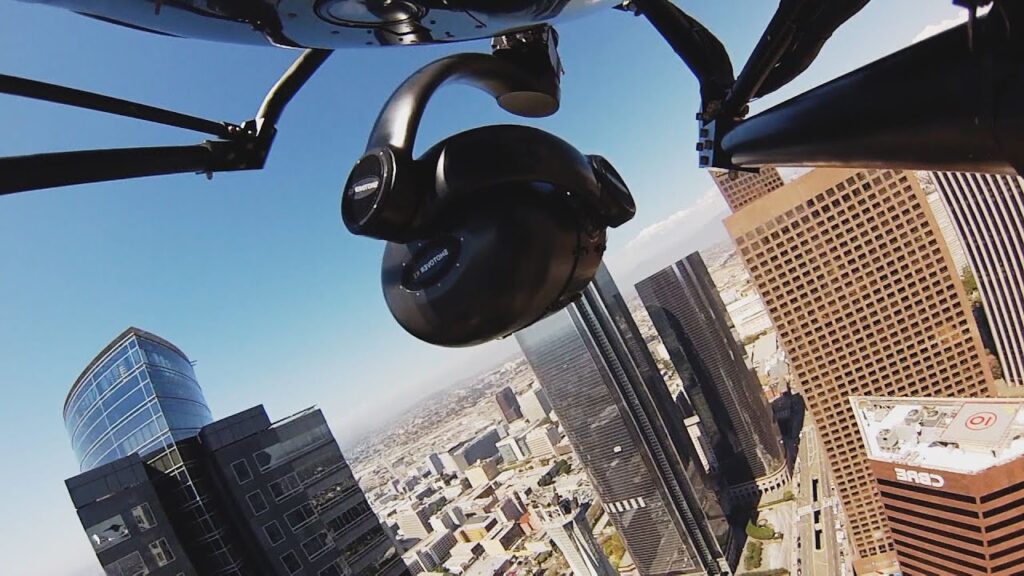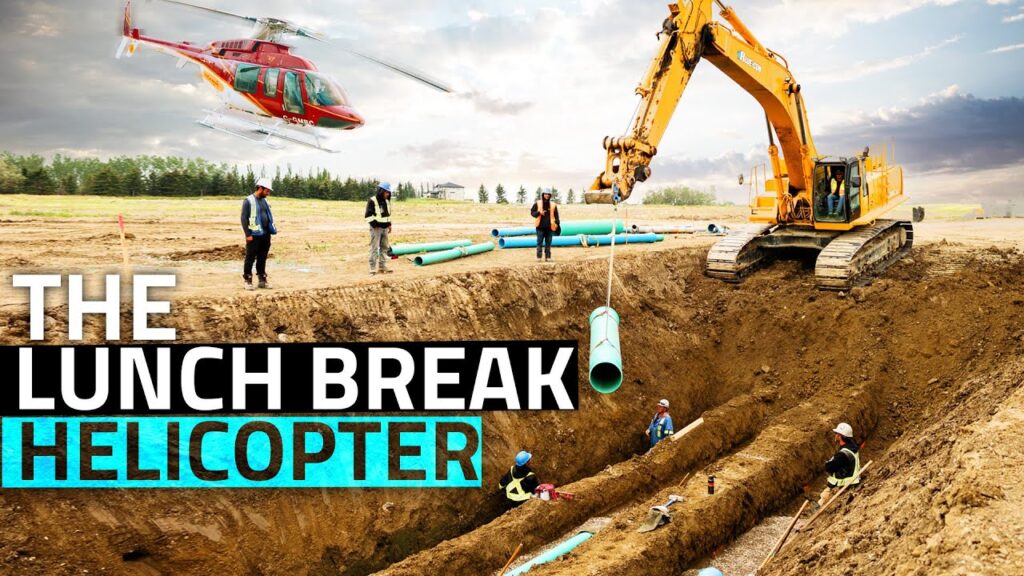Understanding Helicopter External Load Operations for Research
Helicopter external load operations, also known as long-line or vertical reference flying, are critical for conducting various types of research in remote or hard-to-reach areas. These operations involve transporting materials, equipment, or even research teams to locations where traditional methods of transport are not feasible. By using helicopters capable of carrying external loads, researchers can minimize their impact on the environment while maximizing their efficiency and access to sensitive or unspoiled sites.
One of the primary applications of helicopter external load operations in research is in the field of environmental science. Scientists often need to deploy sensors, collect samples, or establish monitoring stations in areas without roads or in regions where the terrain is too rugged for ground vehicles. Helicopters equipped with sling loads offer a means to transport necessary gear efficiently while also providing the ability to relocate items as the research parameters change.
Safety is paramount in all helicopter operations, especially those involving external loads. Pilots undergo extensive training to handle the unique aerodynamics and flight characteristics that come with carrying underslung loads. Additionally, meticulous planning is essential to ensure all flights are conducted safely, considering factors such as weight distribution, secure rigging, and clear communication between the pilot and ground crew. Understanding these complexities is crucial for researchers who rely on these operations to advance their work.
Moreover, the versatility of helicopter external load operations extends to support conservation efforts, wildlife management, and geological surveys. In each application, the helicopter not only enhances the effectiveness of research activities but also serves to promote a minimal environmental footprint. This is especially vital in preserving the integrity of ecological zones and wildlife habitats that could otherwise be compromised through more invasive methods of transport or study.
The Importance of Specialized Helicopters in External Load Research Missions
Specialized helicopters play a pivotal role in facilitating external load research missions by offering unique capabilities that standard aircraft simply cannot match. These missions often involve transporting heavy or awkwardly-shaped cargo that is impractical for conventional transport methods. The design of these helicopters includes features such as reinforced airframes and advanced lift capabilities, allowing them to handle significant weight and unconventional loads with ease.
In the realm of scientific exploration and infrastructure development, the use of specialized helicopters enhances safety and efficiency. For external load research, which can include tasks like aerial construction, precision placement of scientific equipment, or transport of materials to remote locations, the stability and control provided by these helicopters are indispensable.
Moreover, these helicopters are equipped with state-of-the-art avionics and navigation systems, which are crucial for missions requiring high degrees of precision. Tasks such as the installation of communication towers or conducting geological surveys in inaccessible regions highlight the necessity for such sophisticated equipment. Advanced systems ensure precise maneuvering and placement, which can be the difference between success and failure in critical operations.
Operating these specialized helicopters requires a crew with a unique set of skills and extensive training. Pilots and engineers must collaborate closely to manage the dynamics of external loads, adjusting for factors like wind resistance and load movement. This synergy between man and machine is essential for the safe and successful completion of research missions.
The environmental impact of such missions also cannot be overlooked. Specialized helicopters are designed to minimize ecological disturbance, which is particularly important when working in sensitive habitats or conducting wildlife research. Their ability to hover and maneuver with minimal ground infrastructure helps to preserve the natural state of the environments in which they operate.
Key Safety Protocols in Helicopter External Load Operations for Research
Conducting helicopter external load operations for research purposes requires strict adherence to safety protocols to ensure the well-being of the crew, the aircraft, and the integrity of the cargo. One crucial safety measure is the pre-flight inspection, which includes a thorough check of the helicopter, with special attention given to the external load rigging. Pilots and ground personnel must ensure that all components such as hooks, lines, and nets are in pristine condition and properly secured. This is vital in preventing any in-flight detachments or load shifting that could destabilize the helicopter.
In addition to equipment checks, crew training stands as a pillar of operational safety. Crew members, both in the air and on the ground, should be well-trained in external load operations and emergency procedures. This includes understanding the limits of the helicopter’s lifting capabilities and knowing how to react quickly and effectively in case of unforeseen events. Regular training exercises provide opportunities for the crew to practice coordination and sharpen their skills, which is indispensable for maintaining a high level of safety during actual research missions. Furthermore, communication during these operations is critical; hence, protocols emphasize clear, concise, and constant dialogue between the pilot, ground crew, and air traffic control.
Environmental considerations also play a significant role in the safety of external load operations. Weather conditions such as high winds, rain, or reduced visibility can greatly impact the ability to safely transport external loads. It is crucial for the operation team to have access to accurate and current meteorological data and to be willing to postpone or adjust the operation if conditions are deemed unsafe. Balancing the urgency of research needs with the safety risks associated with adverse weather is a necessary judgment call that must be made with utmost precaution.
Innovations in Helicopter External Load Equipment for Research Purposes
The landscape of aerial research has transformed dramatically in recent years, thanks to advancements in helicopter external load equipment. In particular, the development of high-precision lifting technology has broadened the scope of what’s possible. Researchers now utilize sophisticated load-hooks and extendable arms capable of accurate movement and placement, allowing for the collection of data in previously inaccessible terrain. The integration of GPS and real-time data sharing also ensures that loads are precisely managed from takeoff to landing, which is critical for sensitive research equipment and the collection of uncontaminated samples.
An especially significant innovation is the implementation of advanced lightweight materials in the construction of external load equipment. By reducing the overall weight, helicopters experience less strain and can operate for longer periods, or carry additional scientific gear. Moreover, specialized cargo nets and secure fastening systems have been designed to minimize the chances of cargo shifting or becoming dislodged during flight, which is essential for maintaining the integrity of the research being conducted.
Furthermore, the advent of autonomous flight capabilities has started to make its way into external load operations. Unmanned Aerial Vehicles (UAVs) equipped with external load systems can now be used in research missions that would be too dangerous for manned flights. The use of drones increases the safety of research personnel and provides a cost-effective alternative for transporting equipment to remote or hazardous locations. As this technology continues to evolve, it promises to unlock new possibilities for research and data collection that were previously beyond reach.
Case Studies: Successful Helicopter External Load Operations for Research in the USA
The United States has a rich history of using helicopters to perform external load operations for various research purposes. From the dense woodlands of the Pacific Northwest to the sprawling desert landscapes of the Southwest, helicopters have been crucial in enabling researchers to collect data in otherwise inaccessible areas. One notable example includes the transport of sensitive equipment to monitor seismic activity along the San Andreas Fault. The use of helicopters allowed seismologists to safely and efficiently place their instruments in precise locations, which were key to advancing our understanding of tectonic movements.
Another instance where helicopter external load capabilities were put to the test involved ecological studies in Alaska’s remote regions. Ecologists needed to track migrating herds of caribou to study their patterns and the effects of climate change. By attaching GPS collars to the animals in the field via helicopter operations, scientists gathered invaluable data without the need for extensive on-the-ground tracking across harsh and challenging terrains. This operation demonstrated how helicopters could minimize human-animal interaction and maximize the collection of undisturbed behavioral data.
Additionally, in the scientific community’s ongoing effort to study and preserve endangered species, helicopters have provided a unique advantage. Projects like the California Condor Recovery Program have relied on helicopters to transport biologists and veterinarians, along with necessary medical equipment, to nesting sites for health assessments and tagging. These operations need to be conducted with precision and care to ensure the safety of both the endangered species and the research teams. Helicopters facilitate quick and effective access to critical habitats while maintaining a low impact on the environment.







